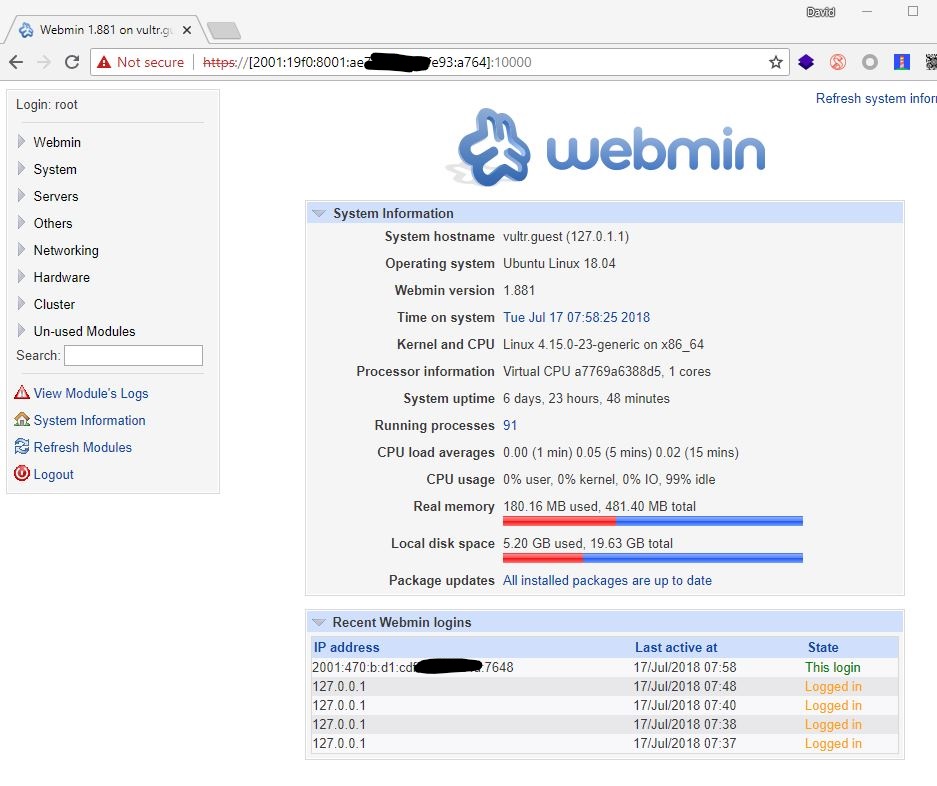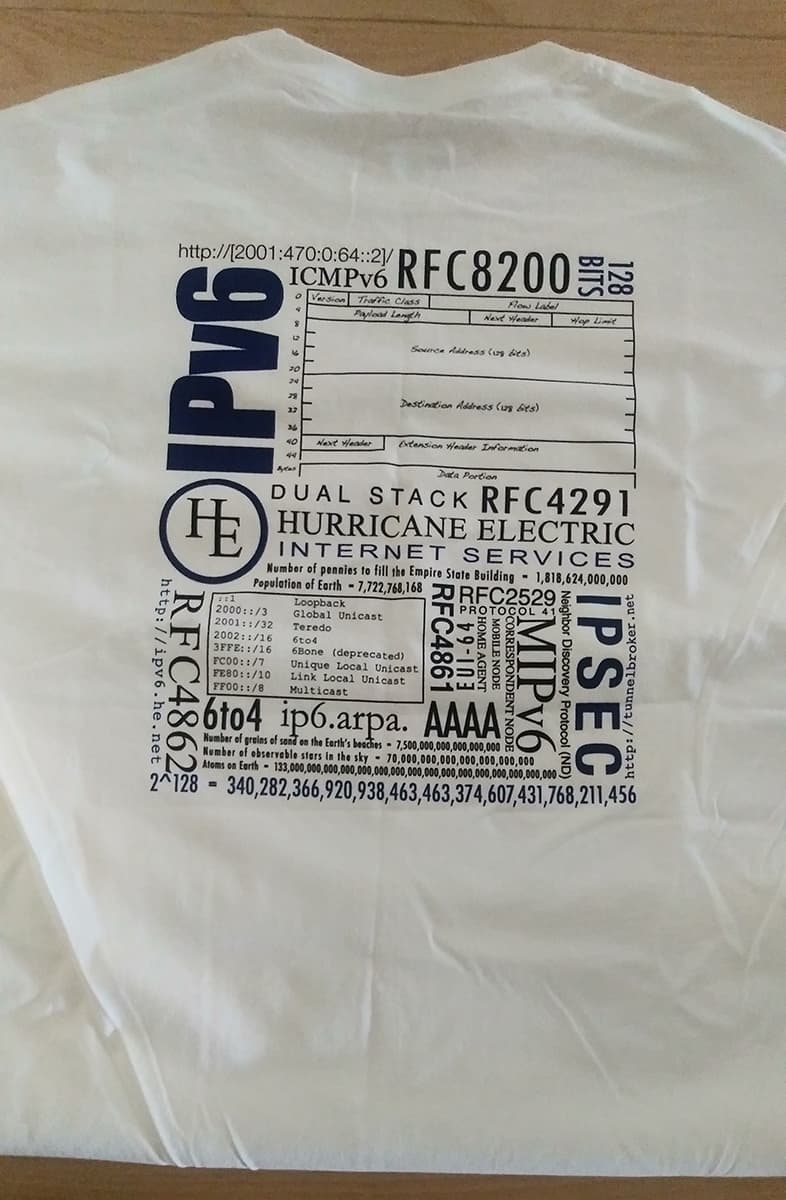This is a list of the terms I want to put up to study here.
HE.net
Hurricane Electric Internet Services
Hurricane Electric operates its own global IPv4 and IPv6 network and is considered the largest IPv6 backbone in the world as measured by the number of networks connected. Within its global network, Hurricane Electric is connected to over 200 major exchange points and exchanges traffic directly with more than 7,500 different networks. Employing a resilient fiber-optic topology, Hurricane Electric has no less than five redundant 100G paths crossing North America, five separate 100G paths between the U.S. and Europe, and 100G rings in Europe and Asia. Hurricane also has a ring around Africa and a PoP in Australia. In addition to its vast global network, Hurricane Electric owns and operates two data centers in Fremont, California – including Hurricane Electric Fremont 2, its newest 200,000 square-foot facility. Hurricane Electric offers IPv4 and IPv6 transit solutions over the same connection. Connection speeds available include 100GE (100 gigabits/second), 40GE, 10GE, and gigabit ethernet.
That’s it. He.net is the invisible giant behind a lot of IT company.
IPv6
It means IP version 6. The current version is IP version 4. IPv4 started in the early 1970s.
http://[2001:470:0:64::2]/
It is the address of https://ipv6.he.net
RFC8200
It is standard of IPv6, or Internet Protocol, Version 6 (IPv6) Specification
128Bits
IPv6 address format is 128 bits, which is extended from IPv4, 32 bits.
ICMPv6
If you are familiar with IPv4, the Internet Control Message Protocol (ICMP) for IPv4 is probably a good friend of yours: it gives important information about the health of the network. ICMPv6 is the version that works with IPv6. It reports errors if packets cannot be processed properly and sends informational messages about the status of the network. For example, if a router cannot forward a packet because it is too large to be sent out on another network, it sends an ICMP message back to the originating host.
The source host can use this ICMP message to determine a better packet size and then resend the data. ICMP also performs diagnostic functions, such as the well-known ping,which uses ICMP Echo Request and Echo Reply messages to test availability of a node.
ICMPv6 is much more powerful than ICMPv4 and contains new functionality, as described in this chapter. For instance, the Internet Group Management Protocol (IGMP) function that manages multicast group memberships with IPv4 has been incorporated into ICMPv6. The same is true for ARP/RARP, the Address Resolution Protocol/Reverse Address Resolution Protocol function used in IPv4 to map Layer 2 addresses to IP
addresses (and vice versa). Neighbor Discovery (ND) is introduced; it uses ICMPv6 messages to determine link-layer addresses for neighbors attached to the same link, find routers, keep track of which neighbors are reachable, and detect changed link-layer addresses. New message types have been defined to allow for simpler renumbering of networks and updating of address information between hosts and routers. ICMPv6 also supports Mobile IPv6.
IPSEC
IPsec is a collection of protocols for securing IP communications by authenticating each IP packet of a data stream.
RFC4862
“IPv6 Stateless Address Autoconfiguration,” 2007
RFC4861
“Neighbor Discovery for IP Version 6,” 2007
MIPv6
Mobile IPv6
AAAA
DNS AAAA (referred to as quad-A) record represents IPv6 addresses.
DNS A record represents IPv4 addresses.
ip6.arpa.
Originally, the reverse domain was called IP6.INT. It has been deprecated
(RFC 4159) and replaced by IP6.ARPA.
6to4
The IANA has permanently assigned a 13-bit TLA identifier for 6to4 operations within the global unicast address range (001). 6to4 is one of the mechanisms defined to let IPv6 hosts or networks communicate over an IPv4-only infrastructure.
The prefix has a total length of 48 bits. The IPv4 address in the prefix must be a public IPv4 address and is represented in hexadecimal notation. For instance, if you configure an interface for 6to4 with an IPv4 address of 62.2.84.115, the 6to4 prefix is 2002:3e02:5473::/48. Through this interface, all IPv6 hosts on this link can tunnel their packets over the IPv4 infrastructure.
EUI-64
64-bit Extended Unique Identifier(EUI-64)
RFC2529
“Transmission of IPv6 over IPv4 Domains without Explicit Tunnels,” 1999
Protocol 41
Protocol 41 is a communication protocol which embeds internet protocol version 6 (IPv6) packets inside Internet protocol version 4 (IPv4) packets. It is usually used to allow a computer or router with only an IPv4 address to obtain an IPv6 address (or maybe more than one address, to serve more than one computer). Most IPv6 tunnel providers support Protocol 41, including Hurricane Electric and SixXS. 6to4, 6rd, and 6in4 are all different ways of using Protocol 41.
Neighbor Discovery Protocol(ND)
The Neighbor Discovery Protocol (NDP) specification is used by both
hosts and routers. Its functions include Neighbor Discovery (ND), Router Discovery (RD), Stateless Address Autoconfiguration (SLAAC), Address Resolution, Neighbor Unreachability Detection (NUD), Duplicate Address Detection (DAD), and Redirection.
Correspondent Node
A peer node with which a mobile node is communicating. The correspondent node may be either mobile or stationary.
Mobile Node
A node that can change its point of attachment from one link to another while still being reachable via its home address.
Home Agent
A router on a mobile node’s home link with which the mobile node has registered its current Care-of address. While the mobile node is away from home, the home agent intercepts packets on the home link destined to the mobile node’s home address, encapsulates them (IPv6 encapsulation), and tunnels them to the mobile node’s registered Care-of address.
http://ipv6.he.net
Hurricane Electric IPv6 website. It has a set of exams and help to understand IPv6.
I passed all the exams and got the certificate.
http://tunnelbroker.net
Hurricane Electric Free IPv6 Tunnel Broker.
A free tunnel broker service enables you to reach the IPv6 Internet by tunneling over existing IPv4 connections from your IPv6 enabled host or router to one of our IPv6 routers. To use this service you need to have an IPv6 capable host (IPv6 support is available for most platforms) or router which also has IPv4 (existing Internet) connectivity. Our tunnel service is oriented towards developers and experimenters that want a stable tunnel platform.
Right now I am using it.
2^128 = 340,282,366,920,938,463,463,374,607,431,768,211,456
Number of the IPv6 address.
- Population of Earth = 7,722,768,138
- Number of pennies to fill the Empire State Building = 1,818,624,000,000
- Number of grains of sand on the Earth’s beaches = 7,500,000,000,000,000,000
- Number of observable stars in the sky = 70,000,000,000,000,000,000,000
- Atoms on Earth = 133,000,000,000,000,000,000,000,000,000,000,000,000,000,000,000,000
Dual Stack
This technique is easy to use and flexible. It is your best option. Hosts can communicate with IPv4 hosts using IPv4 or communicate with IPv6 hosts using IPv6. When everything has been upgraded to IPv6, the IPv4 stack can simply be disabled or removed. Whenever you can, deploying dual-stack hosts and routers offers the greatest flexibility in dealing with islands of IPv4-only applications, equipment, and networks. Dual-stack is also the basis for other transition mechanisms. Tunnels need dual-stacked endpoints, and translators need dual-stacked gateways.
RFC4291
IPv6 Addressing Architecture, 2006.
It is still a Draft Standard.
| ::1 | Loopback |
| 2000::/3 | Global Unicast |
| 2001::/32 | Teredo |
| 2002::/16 | 6to4 |
| 3FFE::/16 | 6Bone (deprecated) |
| FC00::/7 | Unique Local Unicast |
| FE80::/10 | Link Local Unicast |
| FF00::/8 | Multicast |

